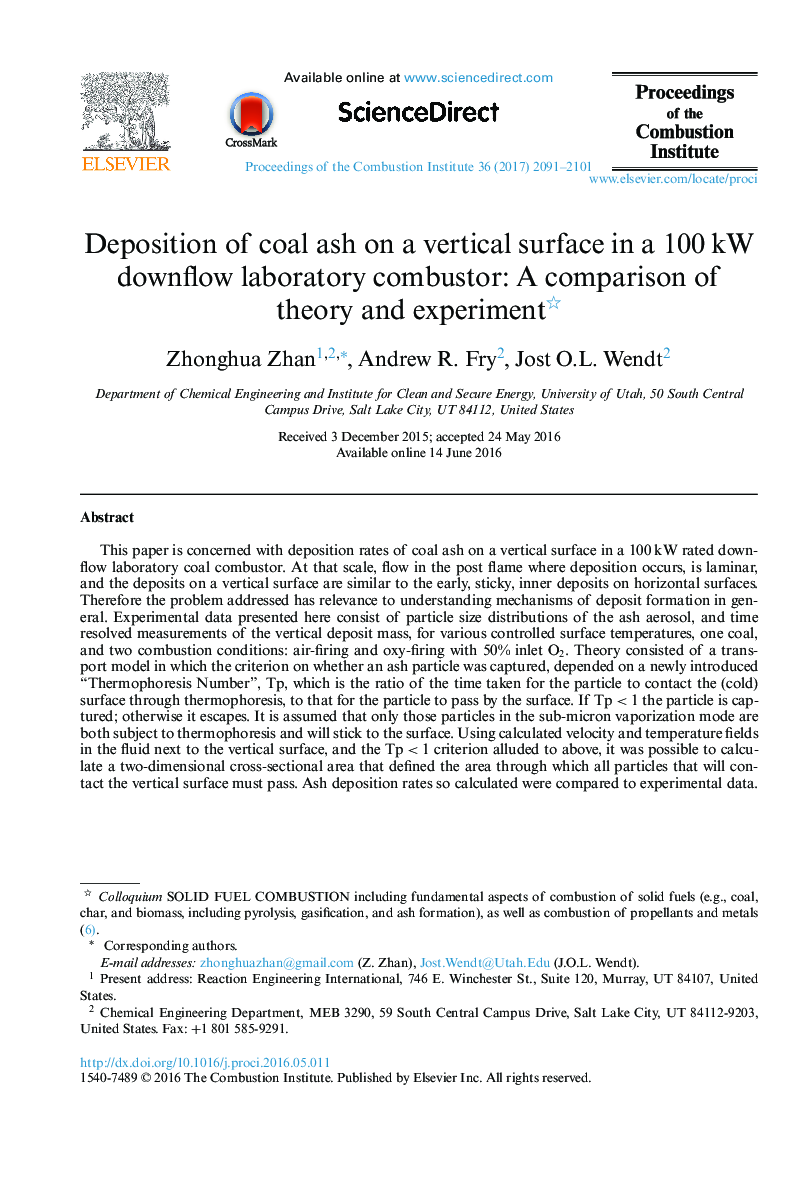| Article ID | Journal | Published Year | Pages | File Type |
|---|---|---|---|---|
| 6478271 | Proceedings of the Combustion Institute | 2017 | 11 Pages |
This paper is concerned with deposition rates of coal ash on a vertical surface in a 100Â kW rated down-flow laboratory coal combustor. At that scale, flow in the post flame where deposition occurs, is laminar, and the deposits on a vertical surface are similar to the early, sticky, inner deposits on horizontal surfaces. Therefore the problem addressed has relevance to understanding mechanisms of deposit formation in general. Experimental data presented here consist of particle size distributions of the ash aerosol, and time resolved measurements of the vertical deposit mass, for various controlled surface temperatures, one coal, and two combustion conditions: air-firing and oxy-firing with 50% inlet O2. Theory consisted of a transport model in which the criterion on whether an ash particle was captured, depended on a newly introduced “Thermophoresis Number”, Tp, which is the ratio of the time taken for the particle to contact the (cold) surface through thermophoresis, to that for the particle to pass by the surface. If Tp <Â 1 the particle is captured; otherwise it escapes. It is assumed that only those particles in the sub-micron vaporization mode are both subject to thermophoresis and will stick to the surface. Using calculated velocity and temperature fields in the fluid next to the vertical surface, and the Tp <Â 1 criterion alluded to above, it was possible to calculate a two-dimensional cross-sectional area that defined the area through which all particles that will contact the vertical surface must pass. Ash deposition rates so calculated were compared to experimental data. Quantitative agreement between theory and experiment was fair, considering the difficulties in accurately measuring deposition rates and in view of simplifications contained in the model.
